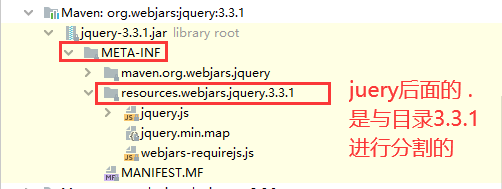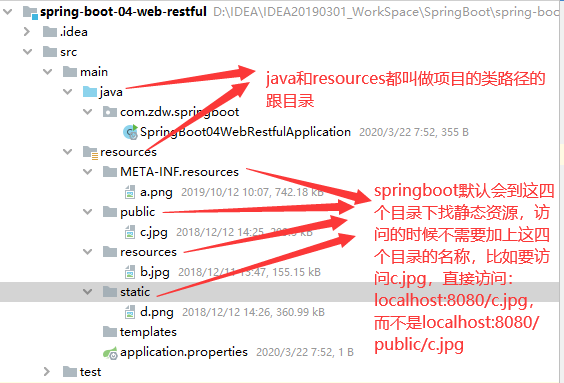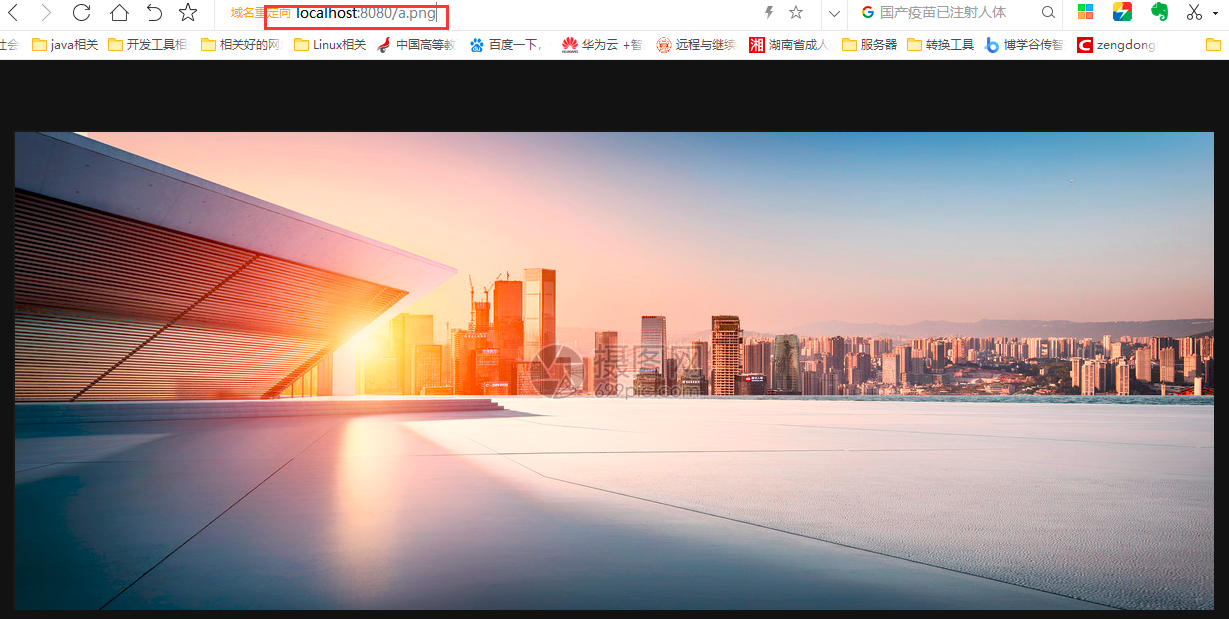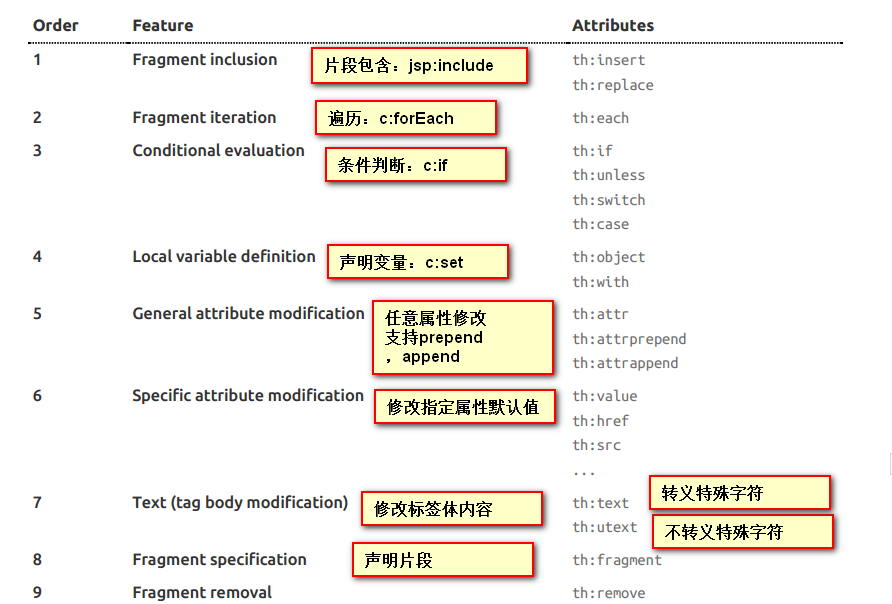1、简介
SpringBoot就是为了来简化和快速开发我们的项目的,所以使用SpringBoot是很简单的,只需要简单的几步就好了;如果要使用SpringBoot进行Web开发,那我们需要选中web模块,SpringBoot便会帮我们做好Web开发相关的自动配置,我们只要写业务代码就行了。
1)、创建SpringBoot应用,选中我们需要的模块;
2)、SpringBoot已经默认将这些场景配置好了,只需要在配置文件中指定少量配置就可以运行起来;
3)、自己编写业务代码;
所以使用SpringBoot是很简单的,但是如果想要知其所以然,就需要知道SpringBoot的自动配置原理,然后才能游刃有余。有两个最基本的地方,那就是SpringBoot里面有大量的类似:xxxxAutoConfiguration:用来帮我们给容器中自动配置组件;
一个xxxxAutoConfiguration就会对应一个 xxxxProperties 配置类,用来封装配置文件的内容;我们可以在application.properties配置文件中进行自定义的配置。
创建新的工程spring-boot-04-web,创建方式和之前是一样的,pom.ml文件如下:
1
2
3
4
5
6
7
8
9
10
11
12
13
14
15
16
17
18
19
20
21
22
23
24
25
26
27
28
29
30
31
32
33
34
35
36
37
38
39
40
41
42
43
44
45
46
47
48
49
50
51
52
53
54
55
56
57
58
59
60
61
62<?xml version="1.0" encoding="UTF-8"?> <project xmlns="http://maven.apache.org/POM/4.0.0" xmlns:xsi="http://www.w3.org/2001/XMLSchema-instance" xsi:schemaLocation="http://maven.apache.org/POM/4.0.0 https://maven.apache.org/xsd/maven-4.0.0.xsd"> <modelVersion>4.0.0</modelVersion> <parent> <groupId>org.springframework.boot</groupId> <artifactId>spring-boot-starter-parent</artifactId> <version>2.2.5.RELEASE</version> <relativePath/> <!-- lookup parent from repository --> </parent> <groupId>com.zdw.springboot</groupId> <artifactId>spring-boot-04-web-restful</artifactId> <version>0.0.1-SNAPSHOT</version> <name>spring-boot-04-web-restful</name> <description>Demo project for Spring Boot</description> <properties> <java.version>1.8</java.version> </properties> <dependencies> <dependency> <groupId>org.springframework.boot</groupId> <artifactId>spring-boot-starter-web</artifactId> </dependency> <!--引入jquery-webjar--> <dependency> <groupId>org.webjars</groupId> <artifactId>jquery</artifactId> <version>3.3.1</version> </dependency> <!--引入bootstrap--> <dependency> <groupId>org.webjars</groupId> <artifactId>bootstrap</artifactId> <version>4.0.0</version> </dependency> <dependency> <groupId>org.springframework.boot</groupId> <artifactId>spring-boot-starter-test</artifactId> <scope>test</scope> <exclusions> <exclusion> <groupId>org.junit.vintage</groupId> <artifactId>junit-vintage-engine</artifactId> </exclusion> </exclusions> </dependency> </dependencies> <build> <plugins> <plugin> <groupId>org.springframework.boot</groupId> <artifactId>spring-boot-maven-plugin</artifactId> </plugin> </plugins> </build> </project>
SpringBoot的版本是2.2.5
2、SpringBoot对静态资源的映射规则
在以前的Web开发中,我们的项目都是以war为打包方式的,创建的工程中也会有webapp等目录,里面是进行web开发相关的静态资源和相关的视图组件。但是在SpringBoot中,基本上都是 jar 打包方式,那么它也能支持这些静态资源和视图吗?
下面我们通过查看WebMvcAutoConfiguration 来查看SpringBoot对静态资源的映射规则:
1
2
3
4
5
6
7
8
9
10
11
12
13
14
15
16
17
18
19
20
21
22
23
24
25
26
27
28
29
30
31
32
33
34
35
36
37
38
39
40
41
42
43
44
45
46
47
48
49
50
51
52
53
54
55
56
57
58
59
60
61
62
63
64
65
66
67
68
69
70@Configuration( proxyBeanMethods = false ) @ConditionalOnWebApplication( type = Type.SERVLET ) @ConditionalOnClass({Servlet.class, DispatcherServlet.class, WebMvcConfigurer.class}) @ConditionalOnMissingBean({WebMvcConfigurationSupport.class}) @AutoConfigureOrder(-2147483638) @AutoConfigureAfter({DispatcherServletAutoConfiguration.class, TaskExecutionAutoConfiguration.class, ValidationAutoConfiguration.class}) public class WebMvcAutoConfiguration { //静态资源映射规则的方法 public void addResourceHandlers(ResourceHandlerRegistry registry) { if (!this.resourceProperties.isAddMappings()) { logger.debug("Default resource handling disabled"); } else { Duration cachePeriod = this.resourceProperties.getCache().getPeriod(); //所有 /webjars/** ,都去 classpath:/META-INF/resources/webjars/ 找资源 CacheControl cacheControl = this.resourceProperties.getCache().getCachecontrol().toHttpCacheControl(); if (!registry.hasMappingForPattern("/webjars/**")) { this.customizeResourceHandlerRegistration(registry.addResourceHandler(new String[]{"/webjars/**"}).addResourceLocations (new String[]{"classpath:/META-INF/resources/webjars/"}).setCachePeriod(this.getSeconds(cachePeriod)).setCacheControl(cacheControl)); } String staticPathPattern = this.mvcProperties.getStaticPathPattern(); //"/**" 访问当前项目的任何资源,都去(静态资源的文件夹)找映射 if (!registry.hasMappingForPattern(staticPathPattern)) { this.customizeResourceHandlerRegistration(registry.addResourceHandler(new String[]{staticPathPattern}).addResourceLocations (WebMvcAutoConfiguration.getResourceLocations(this.resourceProperties.getStaticLocations())).setCachePeriod(this.getSeconds(cachePeriod)).setCacheControl(cacheControl)); } } } //欢迎页面的映射 @Bean public WelcomePageHandlerMapping welcomePageHandlerMapping(ApplicationContext applicationContext, FormattingConversionService mvcConversionService, ResourceUrlProvider mvcResourceUrlProvider) { WelcomePageHandlerMapping welcomePageHandlerMapping = new WelcomePageHandlerMapping(new TemplateAvailabilityProviders(applicationContext), applicationContext, this.getWelcomePage(), this.mvcProperties.getStaticPathPattern()); welcomePageHandlerMapping.setInterceptors(this.getInterceptors(mvcConversionService, mvcResourceUrlProvider)); return welcomePageHandlerMapping; } } ResourceProperties 类的部分代码:(WebMvcAutoConfiguration 中很多时候都是要到这个方法里面找路径的) @ConfigurationProperties( prefix = "spring.resources", ignoreUnknownFields = false ) public class ResourceProperties { private static final String[] CLASSPATH_RESOURCE_LOCATIONS = new String[]{"classpath:/META-INF/resources/", "classpath:/resources/", "classpath:/static/", "classpath:/public/"}; private String[] staticLocations; private boolean addMappings; private final ResourceProperties.Chain chain; private final ResourceProperties.Cache cache; public ResourceProperties() { this.staticLocations = CLASSPATH_RESOURCE_LOCATIONS; this.addMappings = true; this.chain = new ResourceProperties.Chain(); this.cache = new ResourceProperties.Cache(); } public String[] getStaticLocations() { return this.staticLocations; } }
2.1 第三方jar包中的静态资源的访问
当我们要访问引入到项目中的jar包里面的js,css等静态资源的时候,该怎么去访问呢?
从上面的源码可以分析出,SpringBoot对jar包中的静态资源是遵守下面这样的规则:
1、所有请求路径为: /webjars/** (就是以webjars开头的所有路径),都会去 jar包的类路径下classpath下面的/META-INF/resources/webjars/ 找资源;webjars:作用就是:以jar包的方式引入静态资源;官网地址:https://www.webjars.org
1
2
3
4
5
6
7<!‐‐引入jquery‐webjar‐‐>在访问的时候只需要写webjars下面资源的名称即可 --> <dependency> <groupId>org.webjars</groupId> <artifactId>jquery</artifactId> <version>3.3.1</version> </dependency>
例如:我们的项目中引入jquery的webjars依赖,如下:

那么我们如何可以访问到里面的jquery.js文件的内容呢?
启动项目,在浏览器上访问:http://localhost:8080/webjars/jquery/3.3.1/jquery.js 在浏览器上就可以看到对应的内容了,
2.2 自定义的静态资源的映射规则
2.1 讲的是以jar包的方式引入的静态资源,SpringBoot是如何去映射的。那么我们在项目中自定义的一些静态资源,SpringBoot的映射规则又是怎样的呢?
1
2
3
4
5
6
7
8从上面的源码可以知道,SpringBoot会从下面几个路径找静态资源: "classpath:/META‐INF/resources/", "classpath:/resources/", "classpath:/static/", "classpath:/public/" "/":当前项目的根路径
对应我们项目中的结构图(这些文件夹都可以手动创建,使用Spring Initializer 方式创建是SpringBoot项目,会自动帮我们在类路径的根目录resources下面 创建一个 static的静态资源目录):

例如,我们在resources静态资源目录下面,放置了我们的静态资源(如上图所示,分别放置了a.png c.jpg b.jpg d.png),启动工程之后,我们可以在浏览器访问:http://localhost:8080/a.png http://localhost:8080/b.jpg http://localhost:8080/c.jpg http://localhost:8080/d.png 就都能访问到对应的静态资源:

当然,也可以在配置文件application.properties中指定映射静态资源的位置,配置了之后,默认的几个位置的静态资源就访问不到了,比如在application.properties中配置:
1
2spring.resources.static-locations=classpath:/hello/
此时,上面所有的访问地址,都无法访问到静态资源。
所以如果我们要添加自己的静态资源文件夹,在配置的时候,应该保证默认的配置不要动,只是在后面加上自己的文件夹配置:
1
2spring.resources.static-locations=classpath:/META-INF/resources/,classpath:/resoures/,classpath:/static/,classpath:/public/,classpath:/hello/
2.3 欢迎页的默认配置
SpringBoot默认也会从下面的路径去找index.html,作为欢迎页面,它被 “/**” 映射:也就是说请求任何的路径都会从:
静态资源文件夹下的所有index.html页面;被**"/"**映射;
1
2
3
4
5"classpath:/META‐INF/resources/", "classpath:/resources/", "classpath:/static/", "classpath:/public/"
下面找index.html,所以我们可以在这四个路径的任何一个下面编写index.html,都能被SpringBoot访问到。
3、Thymeleaf模板引擎
**SpringBoot使用内嵌的tomcat作为web容器,默认是不支持jsp的。jsp就是一种模板引擎,它的好处就是可以使用c:if c:foreach等进行数据的操作。市面上的模板引擎有:JSP、Freemarker、Velocity、Thymeleaf等。他们的原理都是差不多的,模板引擎可以把模板和数据进行对应的渲染,然后进行输出。
3.1 引入Thymeleat
SpringBoot推荐使用的模板引擎是Thymeleaf,需要导入Thymeleaf的坐标:
1
2
3
4
5<dependency> <groupId>org.springframework.boot</groupId> <artifactId>spring-boot-starter-thymeleaf</artifactId> </dependency>
3.2 Thymeleaf的使用
Themeleaf的自动配置规则,主要可以看:ThymeleafProperties
1
2
3
4
5
6
7
8
9
10
11@ConfigurationProperties(prefix = "spring.thymeleaf") public class ThymeleafProperties { private static final Charset DEFAULT_ENCODING = Charset.forName("UTF-8"); private static final MimeType DEFAULT_CONTENT_TYPE = MimeType.valueOf("text/html"); public static final String DEFAULT_PREFIX = "classpath:/templates/"; public static final String DEFAULT_SUFFIX = ".html";
可以看出:只要我们把HTML页面放在classpath:/templates/,thymeleaf就能自动渲染;
3.2.1 导入thymeleaf的名称空间
要想使用thymeleaf的语法有提示,就应该在html中导入名称空间:
1
2<html lang="en" xmlns:th="http://www.thymeleaf.org">
3.2.2 thymeleaf语法
示例:
1
2
3
4
5
6
7
8
9
10
11
12
13<!DOCTYPE html> <html lang="en" xmlns:th="http://www.thymeleaf.org"> <head> <meta charset="UTF-8"> <title>Title</title> </head> <body> <h1>成功!</h1> <!--th:text 将div里面的文本内容设置为${hello}获取的值 --> <div th:text="${hello}">这是显示欢迎信息</div> </body> </html>
3.2.3 语法规则
1、th:text:改变当前元素里面的文本内容;
th:可以和任意html属性一起使用;来替换原生属性的值。常用的如下:

2、表达式
Variable Expressions : ${…}:获取变量值;OGNL;
1)、获取对象的属性、调用方法
2)、使用内置的基本对象:
1
2
3
4
5
6
7
8#ctx : the context object. #vars: the context variables. #locale : the context locale. #request : (only in Web Contexts) the HttpServletRequest object. #response : (only in Web Contexts) the HttpServletResponse object. #session : (only in Web Contexts) the HttpSession object. #servletContext : (only in Web Contexts) the ServletContext object.
3)、使用内置的一些工具对象:
1
2
3
4
5
6
7
8
9
10
11
12
13
14
15
16
17#execInfo : information about the template being processed. #messages : methods for obtaining externalized messages inside variables expressions, in the same way as they would be obtained using #{…} syntax. #uris : methods for escaping parts of URLs/URIs #conversions : methods for executing the configured conversion service (if any). #dates : methods for java.util.Date objects: formatting, component extraction, etc. #calendars : analogous to #dates , but for java.util.Calendar objects. #numbers : methods for formatting numeric objects. #strings : methods for String objects: contains, startsWith, prepending/appending, etc. #objects : methods for objects in general. #bools : methods for boolean evaluation. #arrays : methods for arrays. #lists : methods for lists. #sets : methods for sets. #maps : methods for maps. #aggregates : methods for creating aggregates on arrays or collections. #ids : methods for dealing with id attributes that might be repeated (for example, as a result of an iteration).
** {…}:选择表达式:和${}在功能上是一样*
选择表达式:和 $ {}在功能上是一样;
补充:配合 th:object="${session.user}:
1
2
3
4
5
6<div th:object="${session.user}"> <p>Name: <span th:text="*{firstName}">Sebastian</span>.</p> <p>Surname: <span th:text="*{lastName}">Pepper</span>.</p> <p>Nationality: <span th:text="*{nationality}">Saturn</span>.</p> </div>
#{…}:获取国际化内容
@{…}:定义URL
1
2@{/order/process(execId=${execId},execType='FAST')}
~{…}:片段引用表达式
1
2<div th:insert="~{commons :: main}">...</div>
Literals(字面量)
1
2
3
4
5
6Text literals: 'one text' , 'Another one!' ,… Number literals: 0 , 34 , 3.0 , 12.3 ,… Boolean literals: true , false Null literal: null Literal tokens: one , sometext , main ,…
Text operations:(文本操作)
1
2
3String concatenation: + Literal substitutions: |The name is ${name}|
Arithmetic operations:(数学运算)
1
2
3Binary operators: + , - , * , / , % Minus sign (unary operator): -
Boolean operations:(布尔运算)
1
2
3Binary operators: and , or Boolean negation (unary operator): ! , not
Comparisons and equality:(比较运算)
1
2
3Comparators: > , < , >= , <= ( gt , lt , ge , le ) Equality operators: == , != ( eq , ne )
Conditional operators:条件运算(三元运算符)
1
2
3
4If-then: (if) ? (then) If-then-else: (if) ? (then) : (else) Default: (value) ?: (defaultvalue)
Special tokens
1
2No-Operation: _
4、SpringMVC自动配置
点击查看1.5.10.RELEASE官方文档
点击查看2.2.5.RELEASE官方文档
4.1 SpringBoot对SpringMVC的配置精髓
Spring MVC 自动配置:
Spring Boot provides auto-configuration for Spring MVC that works well with most applications.(SpringBoot提供了SpringMVC的大多数场景下的自动配置功能);
The auto-configuration adds the following features on top of Spring’s defaults(以下是SpringBoot对SpringMVC的默认配置):
-
Inclusion of ContentNegotiatingViewResolver and BeanNameViewResolver beans.
- 自动配置了ViewResolver(视图解析器:根据方法的返回值得到视图对象(View),视图对象决定如何渲染(转发?重定向?))
- ContentNegotiatingViewResolver:视图解析器是可以配置多个的,他就是用来组合所有的视图解析器的;
- 如何定制:我们可以自己给容器中添加一个视图解析器;自动的将其组合进来;
-
Support for serving static resources, including support for WebJars (covered later in this document)). 支持静态资源,包括支持webjars
-
Automatic registration of Converter, GenericConverter, and Formatter beans:自动注册了 of Converter, GenericConverter, Formatter beans.
- Converter:转换器; public String hello(User user):类型转换使用Converter
- Formatter 格式化器; 2017.12.17===Date;
1
2
3
4
5
6@Bean @ConditionalOnProperty(prefix = "spring.mvc", name = "date-format")//在文件中配置日期格式化的规则 public Formatter<Date> dateFormatter() { return new DateFormatter(this.mvcProperties.getDateFormat());//日期格式化组件 }
自己添加的格式化器转换器,我们只需要放在容器中即可,SpringBoot会自动扫描并注册
-
Support for HttpMessageConverters (covered later in this document).
- HttpMessageConverter:SpringMVC用来转换Http请求和响应的;User—Json;
- HttpMessageConverters 是从容器中确定;获取所有的HttpMessageConverter;
自己给容器中添加HttpMessageConverter,只需要将自己的组件注册容器中(@Bean,@Component)
-
Automatic registration of MessageCodesResolver (covered later in this document). 定义错误代码生成规则
-
Static index.html support. 欢迎页(首页 )index.html的支持
-
Custom Favicon support (covered later in this document). favicon.ico的支持
-
Automatic use of a ConfigurableWebBindingInitializer bean (covered later in this document). 自动配置了 Web请求的数据绑定初始化器,就是用来把请求参数绑定到我们的方法形参上面的
我们可以配置一个ConfigurableWebBindingInitializer来替换默认的;(添加到容器)
If you want to keep those Spring Boot MVC customizations and make more MVC customizations (interceptors, formatters, view controllers, and other features), you can add your own @Configuration class of type WebMvcConfigurer but without @EnableWebMvc. (如果你想保留SpringBoot对SpringMVC的定制,并且还想自定义一些东西,比如:interceptors,formatters等),你可以编写一个用注解@Configuration修饰的WebMvcConfigurer类型的类,但是不能使用@EnableWebMvc修饰。
If you want to provide custom instances of RequestMappingHandlerMapping, RequestMappingHandlerAdapter, or ExceptionHandlerExceptionResolver, and still keep the Spring Boot MVC customizations, you can declare a bean of type WebMvcRegistrations and use it to provide custom instances of those components.
如果你想提供有关:RequestMappingHandlerMapping、RequestMappingHandlerAdapter或ExceptionHandlerExceptionResolver自定义的实例,并且要保持SpringBoot 的MVC定制,你可以声明一个 WebMvcRegistrations 类型的类,然后使用它去提供自定义相关的组件实例。
If you want to take complete control of Spring MVC, you can add your own @Configuration annotated with @EnableWebMvc, or alternatively add your own @Configuration-annotated DelegatingWebMvcConfiguration as described in the Javadoc of @EnableWebMvc.
如果你想完全接管SpringMVC,你可以在自己编写的@Configuration 修饰的配置类上加上 @EnableWebMvc注解,或者添加你自己的@Configuration注释的DelegatingWebMvcConfiguration,如@EnableWebMvc的Javadoc所述
4.2 扩展SpringMVC
在使用SpringMVC的时候,我们需要配置一些自己的视图映射,或者是一些自定义的拦截器,以前都是在xml配置文件中进行配置,比如:
1
2
3
4
5
6
7
8<mvc:view-controller path="/hello" view-name="success"/> <mvc:interceptors> <mvc:interceptor> <mvc:mapping path="/hello"/> <bean></bean> </mvc:interceptor> </mvc:interceptors>
但是,在SpringBoot中是用Java配置类来代替上面的配置内容:编写一个配置类(@Configuration),是WebMvcConfigurer(SpringBoot1.x的时候是WebMvcConfigurerAdapter类型;不能标注@EnableWebMvc,既保留了所有的自动配置,也能用我们扩展的配置;
1
2
3
4
5
6
7
8
9
10
11
12
13
14
15
16
17
18
19
20
21
22
23
24
25
26package com.zdw.springboot.conf; import org.springframework.context.annotation.Configuration; import org.springframework.web.servlet.config.annotation.ViewControllerRegistry; import org.springframework.web.servlet.config.annotation.WebMvcConfigurer; /** * 使用注解@Configuration表明这是一个配置类,可以来扩展我们自己有关SpringMVC 的配置 * 添加配置只需要实现WebMvcConfigurer对应的方法即可 */ @Configuration public class MySpringMvcConfig implements WebMvcConfigurer { /** * 添加视图映射,相当于以前在applicationContext.xml中添加: * <mvc:view-controller path="/hello" view-name="success"/> * @param registry */ @Override public void addViewControllers(ViewControllerRegistry registry) { //浏览器发送 /hello请求直接来到 templates下面的seccess.html页面 registry.addViewController("/hello").setViewName("success"); } }
原理分析:
- 1、首先我们知道,SpringBoot关于web的自动配置都在类:WebMvcAutoConfiguration
- 2、在它里面有这样一个静态内部类:
1
2
3
4
5
6@Configuration( proxyBeanMethods = false ) public static class EnableWebMvcConfiguration extends DelegatingWebMvcConfiguration implements ResourceLoaderAware { private final ResourceProperties resourceProperties;
我们看它的父类:DelegatingWebMvcConfiguration
1
2
3
4
5
6
7
8
9
10
11
12
13
14
15
16
17
18public class DelegatingWebMvcConfiguration extends WebMvcConfigurationSupport { private final WebMvcConfigurerComposite configurers = new WebMvcConfigurerComposite(); public DelegatingWebMvcConfiguration() { } @Autowired(required = false) //从容器中获取所有的WebMvcConfigurer public void setConfigurers(List<WebMvcConfigurer> configurers) { if (!CollectionUtils.isEmpty(configurers)) { this.configurers.addWebMvcConfigurers(configurers); } } //一个参考实现;将所有的WebMvcConfigurer相关配置都来一起调用; protected void addViewControllers(ViewControllerRegistry registry) { this.configurers.addViewControllers(registry); }
从容器中获取所有的WebMvcConfigurer,所以我们自定义的WebMvcController类型的配置类也会被加载生效。
3、容器中所有的WebMvcConfigurer都会一起起作用;
4、我们的配置类也会被调用;
4.3 全面接管SpringMVC
如果你不想使用SpringBoot对SpringMVC的自动配置,所有的配置都是我们自己配置;那么就在我们上面配置类上添加==@EnableWebMvc==即可;
1
2
3
4
5
6
7
8
9
10
11
12
13
14
15
16
17
18
19
20
21
22
23
24
25
26
27
28
29
30
31package com.zdw.springboot.conf; import org.springframework.context.annotation.Configuration; import org.springframework.web.servlet.config.annotation.EnableWebMvc; import org.springframework.web.servlet.config.annotation.ViewControllerRegistry; import org.springframework.web.servlet.config.annotation.WebMvcConfigurer; /** * 使用注解@Configuration表明这是一个配置类,可以来扩展我们自己有关SpringMVC 的配置 * 添加配置只需要实现WebMvcConfigurer对应的方法即可 * * @EnableWebMvc : 该注解的使用会全面接管SpringBoot的SpringMVC的配置,这样的话默认的SpringMvc配置就失效了, * 比如:静态资源的配置就失效,按照之前的方式访问不了静态资源了 */ @Configuration @EnableWebMvc public class MySpringMvcConfig implements WebMvcConfigurer { /** * 添加视图映射,相当于以前在applicationContext.xml中添加: * <mvc:view-controller path="/hello" view-name="success"/> * @param registry */ @Override public void addViewControllers(ViewControllerRegistry registry) { //浏览器发送 /hello请求直接来到 templates下面的seccess.html页面 registry.addViewController("/hello").setViewName("success"); } }
此时再访问之前的静态资源:http://localhost:8080/webjars/jquery/3.3.1/jquery.js 就会报404错误了。
原理:为什么@EnableWebMvc自动配置就失效了?
- 1、@EnableWebMvc的核心
1
2
3
4@Import({DelegatingWebMvcConfiguration.class}) public @interface EnableWebMvc { }
- 2、再看它导入的组件:DelegatingWebMvcConfiguration
1
2
3public class DelegatingWebMvcConfiguration extends WebMvcConfigurationSupport { private final WebMvcConfigurerComposite configurers = new WebMvcConfigurerComposite();
发现它是 WebMvcConfigurationSupport 的子类。
- 3、再次回看:WebMvcAutoConfiguration
1
2
3
4
5
6
7
8@Configuration(proxyBeanMethods = false) @ConditionalOnWebApplication(type = Type.SERVLET) @ConditionalOnClass({Servlet.class, DispatcherServlet.class, WebMvcConfigurer.class}) @ConditionalOnMissingBean({WebMvcConfigurationSupport.class}) @AutoConfigureOrder(-2147483638) @AutoConfigureAfter({DispatcherServletAutoConfiguration.class, TaskExecutionAutoConfiguration.class, ValidationAutoConfiguration.class}) public class WebMvcAutoConfiguration {
@ConditionalOnMissingBean({WebMvcConfigurationSupport.class}) :我们看到这里,意思是只有当没有配置 WebMvcConfigurationSupport 类型的Bean的时候,SpringBoot才会帮我们自动配置WebMvcAutoConfigutarion。而@EnableWebMvc将WebMvcConfigurationSupport组件导入进来;导入的WebMvcConfigurationSupport只是SpringMVC最基本的功能;
5、如果修改SpringBoot的自动配置
模式:
-
1、SpringBoot在自动配置很多组件的时候,先看容器中有没有用户自己配置的(@Bean、@Component)如果有就用用户配置的,如果没有,才自动配置;如果有些组件可以有多个(ViewResolver),就会将用户配置的和自己默认的组合起来;
-
2、在SpringBoot中会有非常多的xxxConfigurer帮助我们进行扩展配置;
-
3、在SpringBoot中会有很多的xxxCustomizer帮助我们进行定制配置。
最后
以上就是现实宝马最近收集整理的关于SpringBoot(四) Web开发(1):SpringBoot关于静态资源的映射、Thymeleaf了解和SpringMVC的自动配置1、简介2、SpringBoot对静态资源的映射规则3、Thymeleaf模板引擎4、SpringMVC自动配置5、如果修改SpringBoot的自动配置的全部内容,更多相关SpringBoot(四)内容请搜索靠谱客的其他文章。


![(解决)无法在web.xml或使用此应用程序部署的jar文件中解析绝对uri:[http://java.sun.com/jsp/jstl/core]](/uploads/reation/bcimg13.png)





发表评论 取消回复